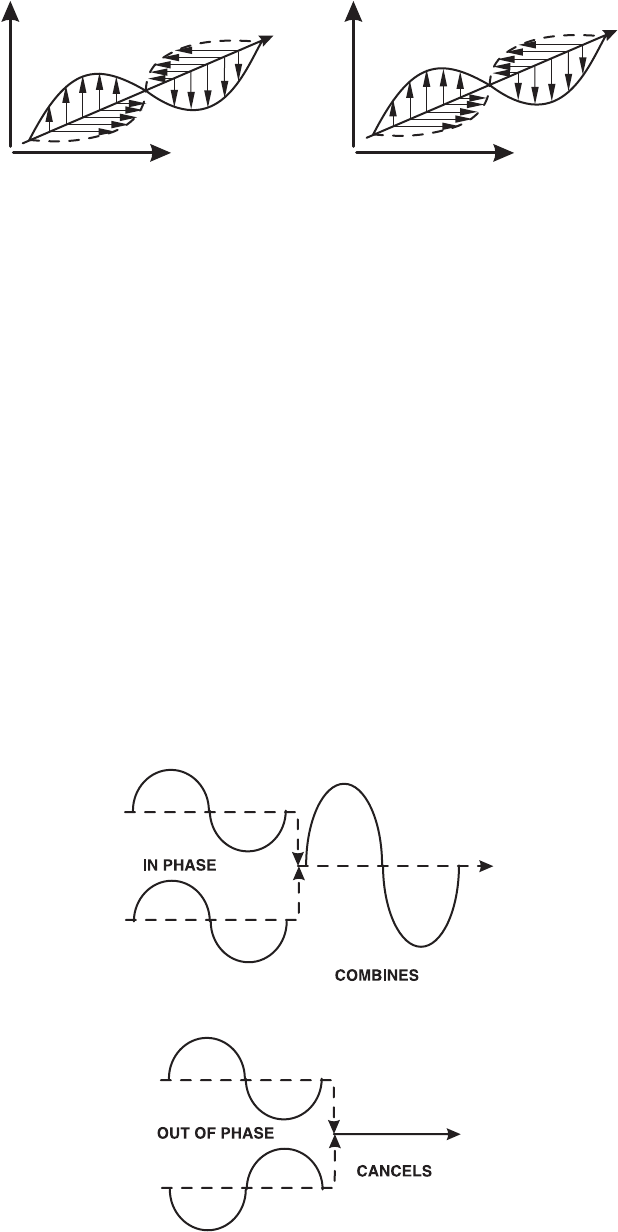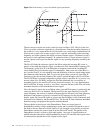
Chapter 7 - Design of Wireless Intercom Systems 99
Figure 7.5
The orientation of the radiator (antenna) determines the polarization, and therefore, the
orientation of the E and H fields.
Transmit and receive antennas of the same system must be oriented in the same direction
(plane) to have a proper transfer of the carrier. In theory, if a transmit antenna is oriented
vertically, thus producing a vertically polarized carrier, and the corresponding receive
antenna is oriented horizontally, the receive antenna will not be able to see the vertically
polarized wave at all. In practice, there will always be some polarization shift in the path
and the receiver will see a very small signal if it is close enough to the transmitter. To
avoid this problem, antennas in a given RF system should always have similar orientation.
There are other forms of polarization, such as circular polarization, which can be used to
help counteract the effect of multipath, but for now we will use horizontal and vertical
polarization for our discussion. It is important to note here the difference between
polarization and phase, as the two terms are often confused. Phase refers to the
relationship of the sinusoidal energy of two or more waves, not to the orientation of the
electrical component. See Figure 7.6. Two identical waves that are in phase, and are
combined, add to make a larger wave. Two identical waves that are out of phase by exactly
180°, and are combined, cancel each other out. See Figure 7.7. Waves that are not exactly
identical in either frequency, amplitude, or phase will have a composite sum that may
increase the overall amplitude at some points, and either reduce or eliminate the overall
amplitude at others. See Figure 7.8. It is critical to have a good understanding of these two
principles as we start to discuss multipath.
Figure 7.6
Waves that are in phase combine to form a larger wave.
Figure 7.7
Waves that are out of phase cancel each other.
E Field
Vertical
H Field
Horizontal
H Field
Vertical
E Field
Horizontal
HORIZONTALLY
POLARIZEDWAVE
VERTICALLY
POLARIZEDWAVE


















